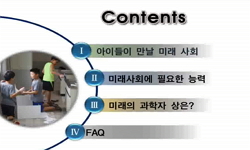To select somatic hybrids of carrot and ginseng by protoplast fusion, E. coli β-glucuronidase (GUS) gene as a marker was introduced to carrot genome by using a binary vector system of Agrobacterium tumefaciens. Protoplasts were enzymatically isolated...
http://chineseinput.net/에서 pinyin(병음)방식으로 중국어를 변환할 수 있습니다.
변환된 중국어를 복사하여 사용하시면 됩니다.
- 中文 을 입력하시려면 zhongwen을 입력하시고 space를누르시면됩니다.
- 北京 을 입력하시려면 beijing을 입력하시고 space를 누르시면 됩니다.
原形質體融合體 選拔을 위한 β-Glucuronidase 標識의 당근에로의 導入 및 發現 = Introduction of β-Glucuronidase Gene as a Marker for the Selection of Protoplast Fusion Products to Carrot by a Ti-Plasmid Vector Systim and Its Expression
한글로보기부가정보
다국어 초록 (Multilingual Abstract)
To select somatic hybrids of carrot and ginseng by protoplast fusion, E. coli β-glucuronidase (GUS) gene as a marker was introduced to carrot genome by using a binary vector system of Agrobacterium tumefaciens. Protoplasts were enzymatically isolated from carrot suspension culture and regenerated into whole plants via somatic embryogenesis after 8 weeks of culture. Protoplasts of carrot and ginseng labeled with fluorcsccin isothiocyanate and rhodamine isothiocyanate, respectively, were fused by polyethylene glycol. An intermediate stage in fusion was observed under cpiscopic illumination. pBI 121 harboring CaMV 35s promoter-GUS fusion was introduced into A. tumefaciens to transform carrot. Hypocotyl and cotyledon explants were co-cultivated with A. tumefaciens carrying pBI 121 on a medium containg 200 ㎎/ℓ kanamycin. Kanamycin-resistant calli were formed after 3 to 4 weeks of culture. Production of agropine and mannopinc was detected in the resistant calli by paper electrophoresis. Southern and Northern blotting analyses confirmed that the resistant calli were transformed with GUS gene. High GUS activities were detected in transformed calli by spectrophotometric and histochemical assays. Roots were sporadically induced from a few of the calli, and a preliminary histochemical assay revealed that GUS gene under CaMV 35s promoter was preferentially expressed in the vascular bundle and the lateral root primordium compared to the hair and the apical meristem.
목차 (Table of Contents)
- 목차 = ⅰ
- LIST OF TABLES = ⅲ
- LIST OF FIGURES = ⅳ
- ABSTRACT = 1
- Ⅰ. 서론 = 3
- 목차 = ⅰ
- LIST OF TABLES = ⅲ
- LIST OF FIGURES = ⅳ
- ABSTRACT = 1
- Ⅰ. 서론 = 3
- Ⅱ. 재료 및 방법 = 7
- 1. 재료 = 7
- (1) 식물재료 = 7
- (2) 공시균주 = 7
- 2. 실험방법 = 9
- (1) 원형질체 분리 및 배양 = 9
- (2) 캘러스 형성 및 體細胞胚發生 = 11
- (3) 인삼의 원형질체 분리 = 11
- (4) 원형질체 융합 = 12
- (5) Binary Vector 제조 = 15
- (6) 당근의 하배축과 자엽의 형질전환 = 16
- (7) Opine 분석 = 16
- (8) Southern 분석 = 17
- (9) Northern 분석 = 17
- (10) β-glucuronidase의 활성분석 = 18
- 가) Spectrophotometric assay = 18
- 나) 조직학적 분석 = 19
- Ⅲ. 결과 및 고찰 = 20
- 1. 당근원형질체 분리 및 배양 = 20
- 2. 원형질체 융합 = 25
- 3. 당근의 형질전환 = 28
- Ⅳ. 적요 = 40
- Ⅴ. 참고문헌 = 42











